How to Properly Add WordPress Image Captions
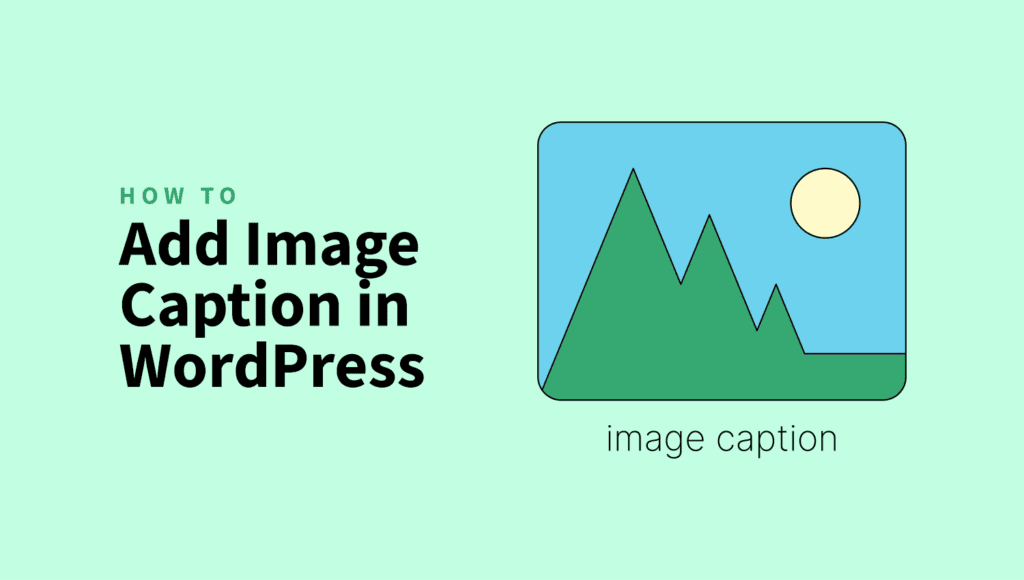
You may struggle to add compelling WordPress image captions that complement visuals and boost SEO performance.
Adding a WordPress Image caption is often overlooked, yet posts with relevant images get a staggering 94% more views. Captions add depth, context, and SEO value to your visuals.
These brief snippets of text help search engines understand your content better. This means you get better SEO results.
In this guide, we’ll share tips on adding, editing, and optimizing WordPress image captions for a better user experience.
Quick Takeaways
- Image captions boost SEO by providing context and helping search engines understand your content.
- They improve user engagement and accessibility, making images more relatable and informative.
- Captions can be easily added and edited in both the Block and Classic Editors in WordPress.
- Custom CSS and plugins allow you to customize the look and feel of captions.
WordPress Image Captions at a Glance
Have you ever scrolled through a WordPress post and felt the images needed a voice? Maybe a captivating photo lacked context, or you weren’t sure exactly what you were looking at.
That’s where the under-appreciated WordPress image caption swoops in. Not using descriptive titles and captions is a common SEO mistake you should avoid.
WordPress image captions aren’t just a fancy label—they help search engines index your content better, improving your SEO ranking.
You might think, “Hang on, aren’t image captions the same as alt text?” Well, not quite. While they contribute to better accessibility and SEO, they serve different purposes.
WordPress image alt text is an invisible attribute that describes the image for visually impaired users and search engines. In contrast, captions are visible snippets that enhance the user experience for everyone.
Image captions are easy to implement, whether using the Block Editor, Classic Editor, or even advanced techniques like shortcodes or custom CSS.
WordPress Image Caption Not Showing: Common Issues
If you’re staring at your published post, wondering why your carefully curated captions aren’t showing up, you’re not alone. Here are some of the most common culprits behind the disappearing act:
Missing Caption Field
Sometimes, the issue is as simple as the photo caption field being hidden or removed from the image upload interface.
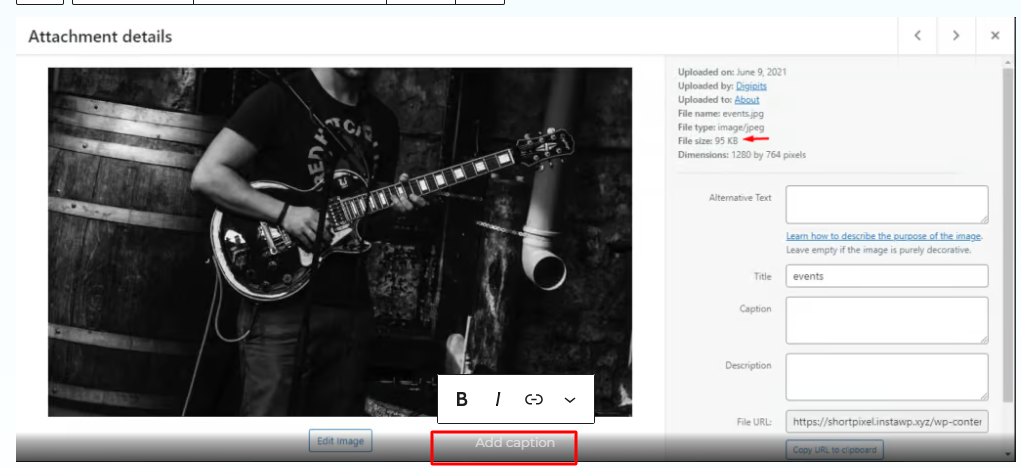
Certain WordPress themes or plugins might result in the image to caption not showing, intentionally or unintentionally omitting this crucial field. It’s like trying to tell a story without words—your visuals are left without the supporting narrative they deserve.
Theme Compatibility Issues
Not all themes are created equal, and some might have compatibility issues with displaying captions.
If you recently changed themes and your captions are MIA, it might be a case of them not being styled correctly by your new theme. These styling conflicts can make captions appear distorted, misplaced, or not showing up.
For this reason, you might need to hunt for a new theme that plays well with captions or consult a developer to tweak the current one.
Conflicting Plugins
WordPress plugins add functionality and enhance your site’s capabilities. However, when plugins start meddling with how images are displayed or handled, they can inadvertently interfere with the display of image captions.
If you’ve recently activated a new plugin, try deactivating it and see if your captions reappear.
Bonus Tip: While troubleshooting, remember to clear your cache. Sometimes, cached data can hold onto outdated information, causing your captions to vanish on the live site even though they’re still in the backend.
Adding Image Captions in WordPress
Using the Block Editor
Adding captions to your images in WordPress with the block editor is super simple. Here’s how:
Click the “+” icon in the editor and choose “Image.” Upload your image or pick one from the library.
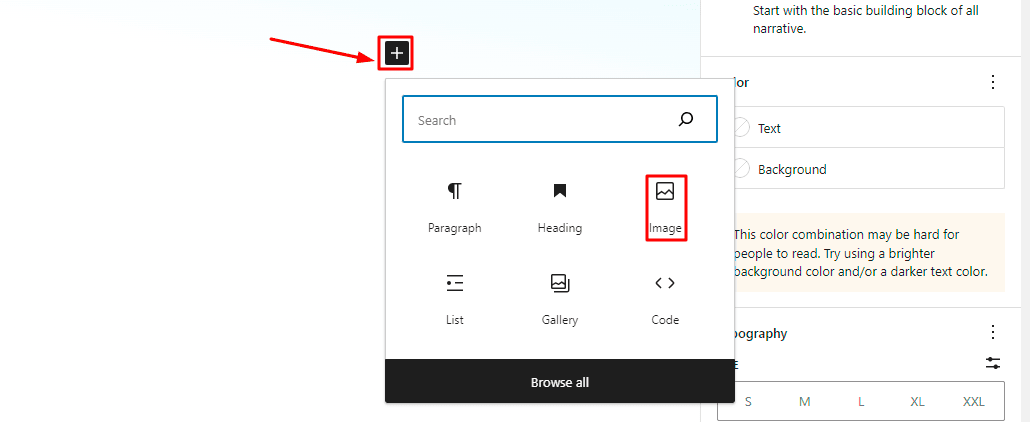
Below the image is a box that says, “Add caption.” That’s your spot for adding a description.
Include a description that fits the image’s context.
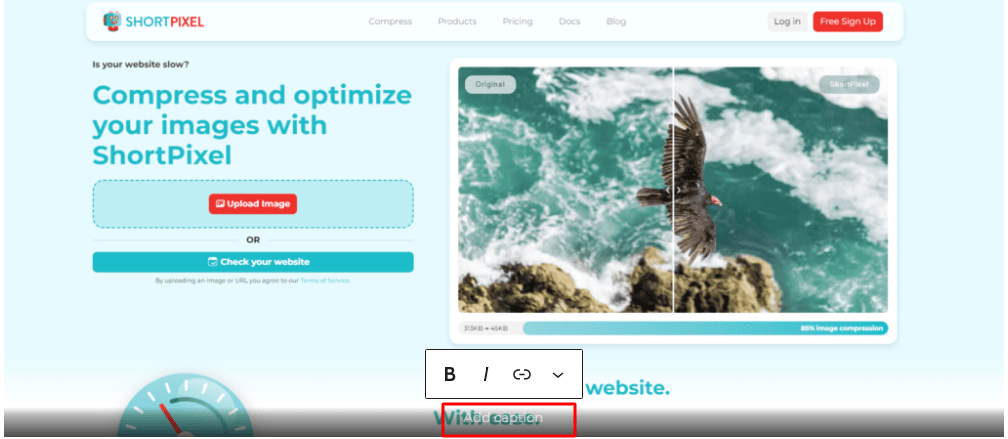
Once your caption’s perfect, hit “Publish” or “Update” to save everything.
For galleries, it’s similar:
Click “+” and choose “Gallery.”
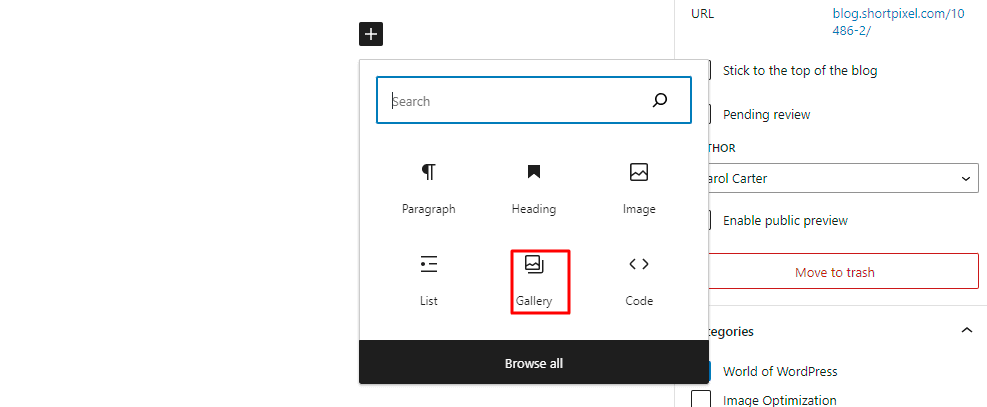
Upload and pick your images from the WordPress Media Library.
You’ll see a box for typing the caption after selecting an image from the library.
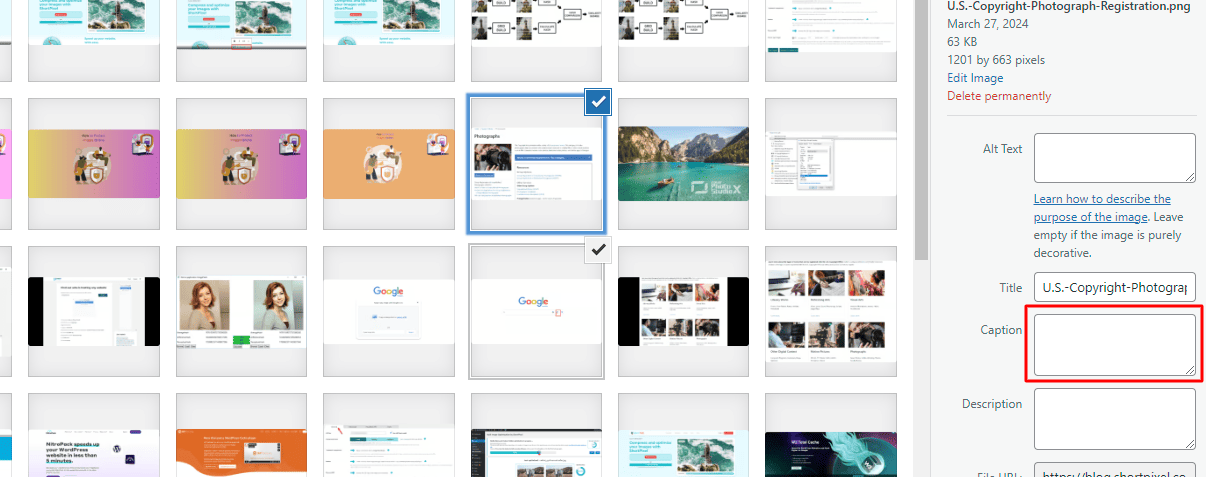
Click “Create a new gallery” to finalize.
Using the Classic Editor
The steps are somewhat different if your WordPress site runs on the classic editor.
Go to one of your posts, and click “Media Library“.
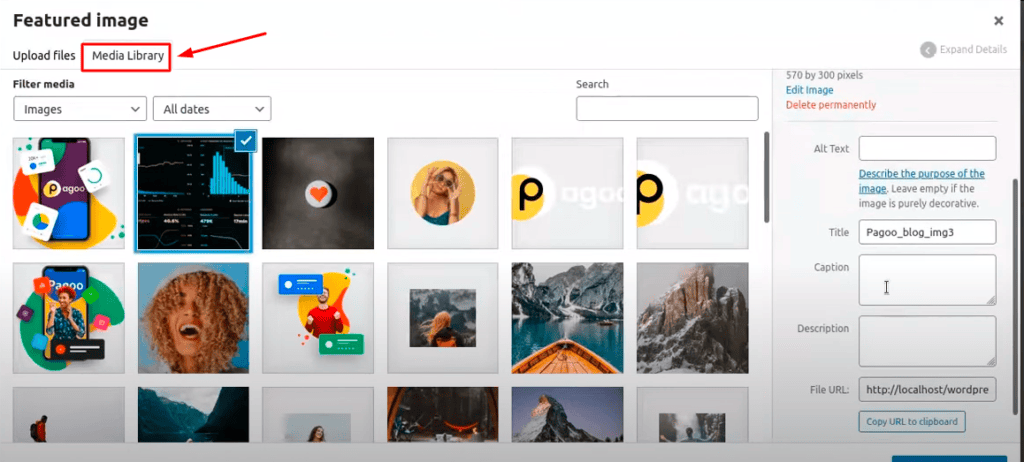
Next, go to the caption text box and describe your image.
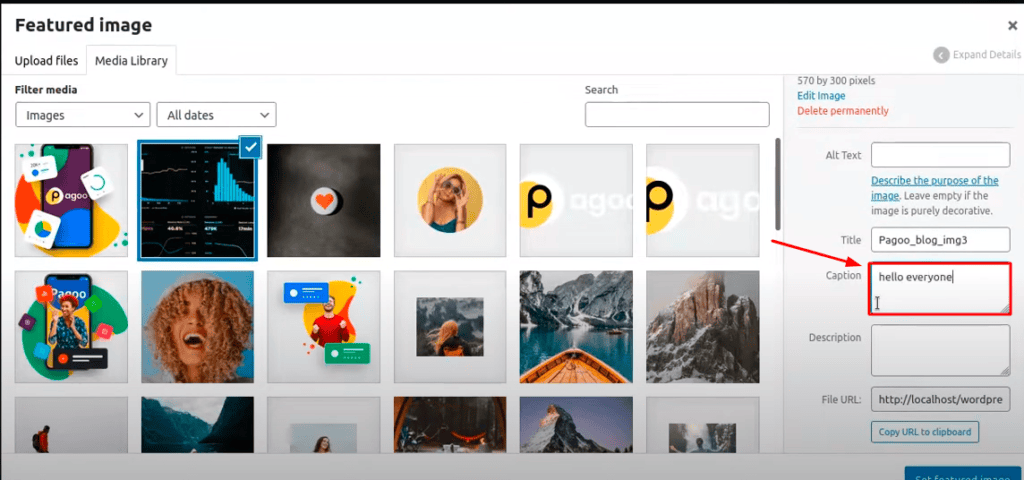
And that’s it, folks!
Editing Existing WordPress Image Captions
Editing existing WordPress image description? Let’s break it down:
Accessing the Media Library
The Media Library is your one-stop shop for all images (and other media) in WordPress. Head to “Media Library” on your dashboard.

This will show you all your uploaded visuals in a grid or list. Use the search and filter options at the top right to pinpoint a specific image.
You can choose to create a gallery and add captions from there.
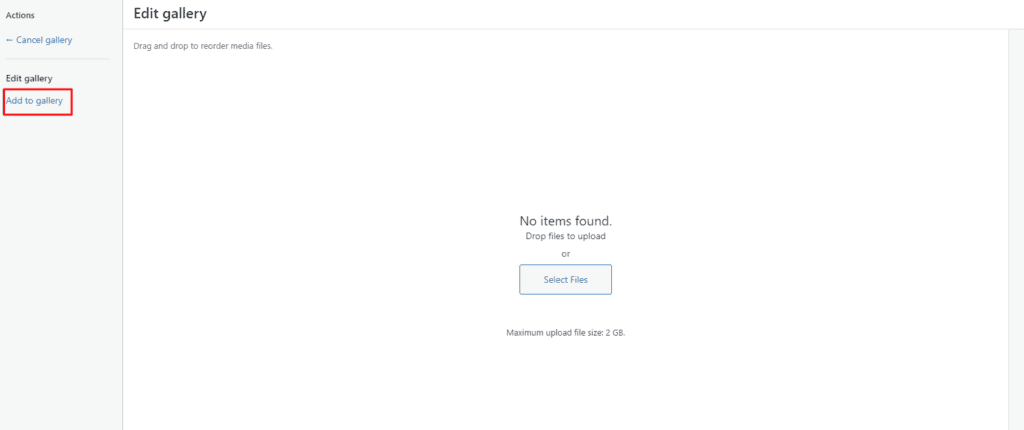
Pro tip: If you’re working on a post or page already, click the “Add Media” button above the editor to access the Library from there.
Next, add captions for all the media files right from your gallery.
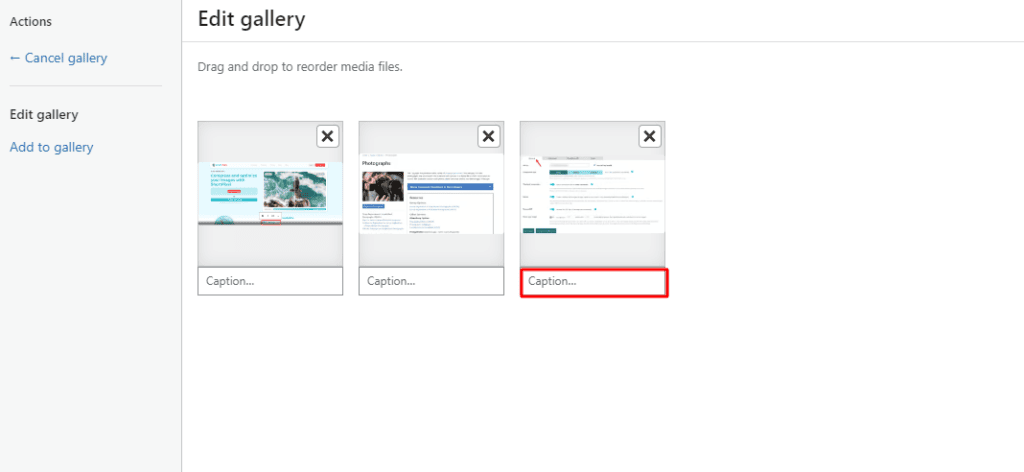
Modifying Caption Text
If you spot an image that needs a caption tweak, hover over it, and options like “Edit” and “Delete Permanently” will appear. Click “Edit” to open the image details.
Look to the right sidebar—you’ll find a “Caption” field holding the current text. Click inside and edit away! Add details, remove unnecessary bits, or replace the entire caption. Don’t forget to hit “Update” after your edits to save the new caption.
Using ShortCodes and Plugins for WordPress Image Captions
Caption shortcodes are like mini commands you insert into your content to unlock extra features.
They let you control the look and feel of your captions, tweaking fonts, colors, spacing, and more. Use shortcodes if you want consistency across your site. Some shortcode plugins offer cool extras like linking captions, hover effects, or displaying image details like size.
While WordPress doesn’t include caption shortcodes out of the box, you could use a third-party plugin to fill this gap. Here are notable WordPress image captions worth mentioning:
1. Visual Composer Addon – Thumbnail with Caption (by Pixel Tribe):
This Visual Composer plugin adds a handy extension for creating captioned thumbnails directly within your page builder workflow. While super convenient if you’re already using Visual Composer, it won’t be as useful if you use a different page builder or prefer a standalone caption solution.
2. Image Caption Hover Effects (by CodeCanyon):
You can choose from over 70 hover animations, making your images come alive when visitors interact with them. Plus, the plugin offers a lightbox feature for pop-up image displays and lets you create tiled galleries. The Image Caption Hover Effects is a must-have if you prioritize interactive elements.
Custom CSS for WordPress Image Captions
To customize image captions with CSS in WordPress, follow these steps:
- Go to Appearance > Themes > Customize (under your active theme) to add custom styles.
- In the Customizer, go to Additional CSS and paste your CSS code, usually located at the bottom of the menu.
- To style the image captions, target the
.wp-caption-textclass. Here’s an example of what you can add:
.wp-caption-text {
font-family: 'Open Sans', sans-serif; /* Set the font */
font-size: 16px; /* Adjust the font size */
color: #333333; /* Set the text color */
text-align: center; /* Center-align the text */
line-height: 1.5; /* Improve readability with line height */
}- After adding the CSS, click Publish and verify a caption to make sure everything works as expected.
Summary
Captions add context, boost SEO, and improve accessibility. Use this guide to unlock easy hacks for the secrets to adding, editing, and optimizing captions in both Block and Classic Editors. Troubleshooting common caption woes and banishing those frustrating moments when your carefully crafted captions vanish into thin air shouldn’t be a pain in the neck.
FAQs
How is adding captions to a picture helpful?
Adding captions to a picture helps improve SEO by giving search engines more context. It also boosts user engagement by making the image more relatable and informative. Captions can clarify the image’s meaning and enhance accessibility for users with visual impairments. Plus, they break up text and improve the overall readability of the page.
What is meant by caption while editing an image in WordPress?
In WordPress, a caption is a short description or text that appears below an image. When editing an image, you can add a caption in the “Caption” field, which is displayed alongside the image on your page or post. It’s helpful for providing context, improving SEO, and making the content more accessible.
How does image captioning work?
Image captioning works by adding descriptive text below or beside an image. In WordPress, when you upload an image, you can enter a caption in the “Caption” field. This text appears on the front-end of the website, usually below the image. It can describe what the image is about, provide context, or add extra information. Captions help with accessibility, SEO, and user engagement by providing more details about the image. They also make content more scannable and informative for visitors.
What is the difference between image caption and description in WordPress?
In WordPress, the image caption and image description serve different purposes. Caption is a short text that appears below the image on the front-end of the website. It’s meant to briefly describe or add context to the image, often visible to users as part of the content. Description is a longer piece of text added in the “Description” field when editing an image in the media library. It’s not usually displayed directly on the page, but it provides additional context and can be used for SEO purposes, helping search engines understand the image better.